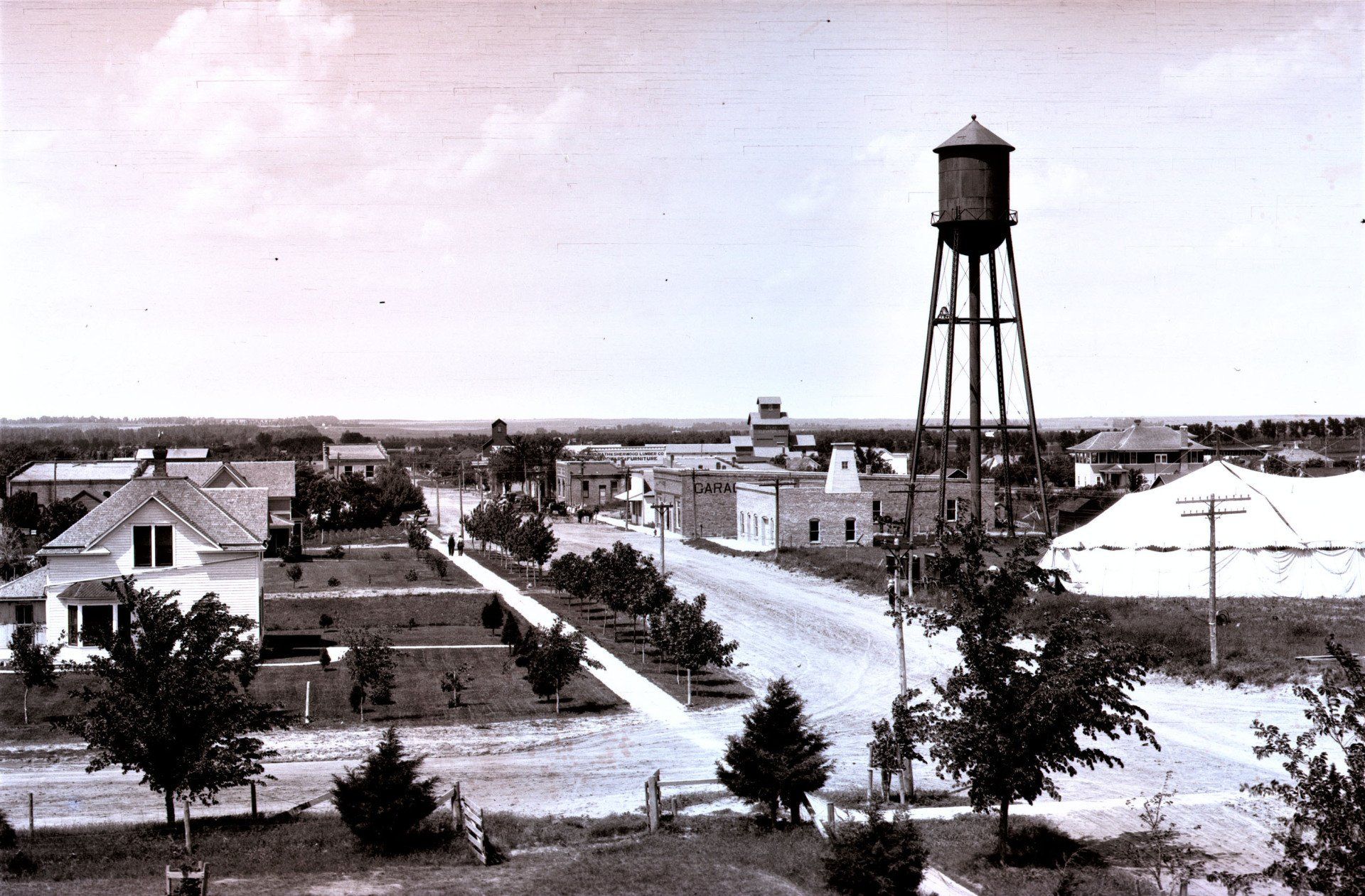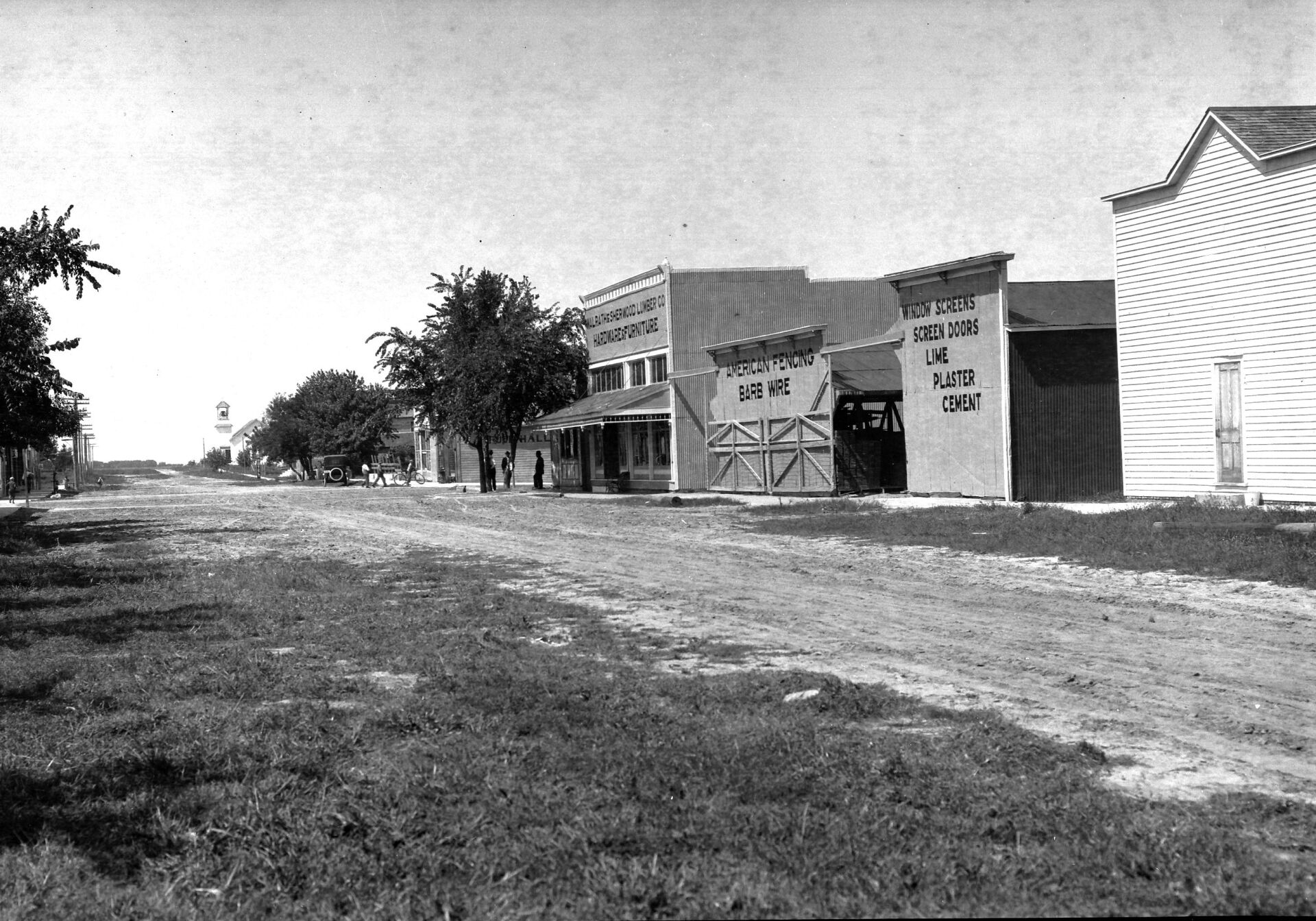Brunswick, Nebraska
Brunswick History
The town began in 1879 when the Galloway family moved to Ellsworth Township from Illinois. Each "eligible member of the family" filed homestead claims -- the parents and three grown children. They built one large house on the intersection touching all four quarters of land so they could lawfully "sleep on their claim." When Charles Galloway became postmaster in 1881, he called the settlement "Little Chicago." A post office nearby called "Clear Springs" took over the duties of this office in 1888. In 1890 Henry Nagel asked that the name be changed to "Brunswick" in honor of the many settlers from Germany.
The first school was established near Galloway's house in 1885. Students delighted in telling how they had attended school in Chicago, Clear Springs, and Brunswick, all with the same teacher. They were very excited when the railroad was being constructed. All were present when the first train arrived and the signboard was placed on the depot.
In 1892 the schoolhouse was moved into town. A large brick school was built in 1910 to house students up to grade 10, the upper grades added in 1917. An addition was needed in 1930. In 1965 Brunswick merged with Plainview, with only the K-6 being taught locally. The old building was opened as an antique business and tearoom in 1989. Locally-made baked goods are sold and quilts are displayed.
The town was really booming in the early 1900s. A bank was started in 1902 and incorporation papers were completed in 1903. When fire destroyed much of the business district in March 1912, most merchants immediately rebuilt.
Brunswick was originally laid out in the shape of a cross. A community church, Christian Missionary Alliance, plus United Church of Christ, and the Catholic Church were established. While they are all still active, only one has a resident pastor, with the others served by pastors from Plainview.
The Brunswick Hotel was a vital part of town. First owned by Shane Omer and later by Pearl Clifton, it had 30 rooms. In the 1950s it was sold to Lorena Heyer and remodeled into a 32-bed nursing home. This closed in 1973 and the building was torn down.
By 1915 the population of Brunswick was 300, supporting two doctors, and many businesses. The depression and drought of the 1930s changed all that. Businesses closed, farms were abandoned, and the population dropped dramatically. The railroad, however, continued to play an active role in the community, helping to keep the town alive.
Several years ago, when the Burlington Northern announced plans to abandon the line, concerned citizens intervened. Instead of tearing it up, the line was upgraded. Brunswick was the first to have "unit trains" in northeast Nebraska. Later, other towns in the area also initiated unit train service.
Helping to keep the trains rolling is the large grain company started in 1934 by Joseph E. Meuret. The company grew from a 20,000 bushel elevator into a major grain terminal for the area, with storage capacity for several million bushels of grain, and modern load-out facilities.
Several other businesses (fertilizer, feed, and gas companies) also use the railroad, with many tons of merchandise coming into and going out of the area each year.
In the 1970s a number of people came "back home" to retire. This sparked new life into the community, with many new homes built and older ones remodeled. A city sewer was added, and a number of facilities were modernized. The community, which again has a population of nearly 300, supports a bank, post office, library, and several dozen businesses.








